Search Results
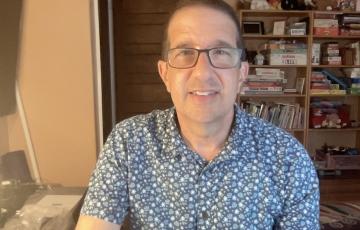
Alan
Life is unpredictable. It can throw unexpected challenges at us, testing our strength, resilience, and hope. My story began in November 2020 with a dreaded phone call from my doctor’s office. The results of my bone marrow biopsy were in, and I had acute myeloid leukemia (AML). AML is a fast-growing and life-threatening cancer of the blood and bone marrow. It was so serious that I needed to get myself to the emergency room right away.
Palliative Care
Palliative care and the medical specialty of Palliative Medicine refers to specialized medical care focused on providing relief from the symptoms and stress of a serious illness. The goal is to improve quality of life for both the patient and the family. Palliative care is provided by a team of specialists, including palliative care doctors, nurses and social workers who work with a patient's other doctors to provide an extra layer of support. It is appropriate at any age and any stage in a serious illness, and it can be provided along with curative treatment.
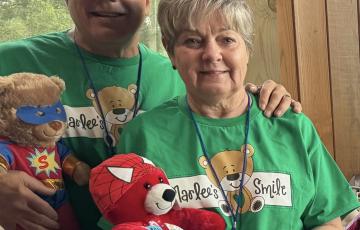
Mark
My wife, Linda, and I celebrate and lament our first anniversary; I was diagnosed with chronic myeloid leukemia (CML) on June 5, 2023. While death is not impending, our future has radically changed. There are losses, namely a more predictable and imaginable future. Certain certainties are broken that cannot be fixed. We search for new norms that require reimagining hopes, dreams, and aspirations. Of course, we will not give up on illness-specific hope that remission comes sooner than later and that side effects subside. No proof exists that we will get what we hope for.
Treatment
There is not one treatment that is effective for all myelofibrosis (MF) patients. Patients have varying symptoms and circumstances that require different treatment options. Some MF patients remain symptom-free for many years and do not require immediate treatment. All MF patients, however, need to be closely monitored.
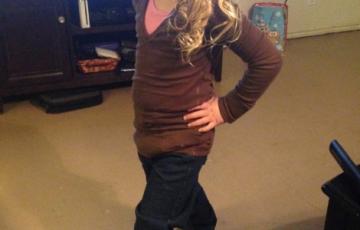
Gabby
Her name is Gabriella Sarai. We call her Gabby! She is a feisty little four year old. She has been running circles around her two older brothers, her dad, and me since she was able to walk. She is the baby and the only girl. She gets away with a lot.

Todd
I was diagnosed at age 33 as a result of an unrelated blood test, very young, I was told. Fluorescence in situ hybridization (FISH) showed low risk. My local oncologist sent me to a regional teaching hospital to get a second opinion, and that opinion was, "If I had to pick a cancer, this would be it." Terrible start!

Lisa
On my ex-husband's 40th birthday, I asked him to take me to the hospital. I'd had elective surgery a week prior, and I knew something was terribly wrong. I felt awful, it hurt to breathe. In emergency, we learned I had acute myeloid leukemia (AML) and bilateral pneumonia. A triple lumen was put in so I could receive antibiotics, blood transfusions, and chemo at the same time. I wasn't expected to make it through the weekend, and my entire family traveled to Dallas to be with me. Through a series of events, I was fortunate to be cared for by Dr.
Other Disease Studies
Another type of study that blood cancer patients and their relatives can participate in is a nontherapeutic study. Nontherapeutic studies aren't considered clinical trials because they don't involve the study of new diagnostics or treatments for diseases. Instead, they're developed to gain a better understanding of disease-incidence patterns or the consequences of specific treatments for a specific disease.
In all cases, you should be asked to sign a consent form that defines the study's purpose and what's expected from the participants.

Claire
In February 2019, our daughter, Claire, was diagnosed with a rare form of acute myeloid leukemia (AML) just three short months after we celebrated her second birthday. We noticed a few discolored bumps on her body and assumed it was just a reaction to a new soap I had purchased, but then they began to pop up on other parts of her body.
Lauren
To be healed by the miracles of modern medicine and prayer was the most profound experience of my life. It is difficult to articulate the gratitude my family and I feel in our hearts for the people who made it so. There is no scenario where I would be here today, writing this account, without the research made possible by The Leukemia & Lymphoma Society (LLS).

Chloe
At the age of 13, I became the youngest stem cell donor at Johns Hopkins Hospital. At 15, I am a Student Visionary of the Year in the 2024 Leukemia and Lymphoma Society (LLS) campaign. LLS has become an integral part of my life over the past two years. In the spring of 2022, the peaceful life of our family was shattered by my mom’s diagnosis of acute myeloid leukemia (AML). Learning that a stem cell transplant was the only cure, I volunteered to donate my bone marrow to her.
School
This page includes information about:
Treatment
It's important that your doctor is experienced in treating patients with chronic myeloid leukemia (CML) or has access to a CML specialist. Doctors who specialize in treating patients with CML are called “hematologist-oncologists.”
Types of CML TreatmentClick the links below to read about types of treatment for CML.
Biosimilars
Many drugs developed are called biological products (known as biologics, also known as the reference product) because they are produced through biotechnology and use living systems, such as a microorganism or a plant cell. Monoclonal antibodies and vaccines are some examples of biological products. Because the makeup of biologics are very complex, it is hard to create imitations of the drug. Some drug development is simple, like following a recipe with standard ingredients.
Diarrhea and Constipation
Diarrhea and constipation are common side effects of cancer treatment. The severity of diarrhea or constipation varies among patients and depends on the type of treatment you receive. Sometimes side effects improve as you adjust to treatment. Most side effects go away when treatment ends.
Tell your healthcare team if you are experiencing new or worsening diarrhea or constipation. Do not take over-the-counter medications without talking to your doctor.
DiarrheaFollow these tips to manage diarrhea:
Brent
My nephew Brent Terence was a perfectly healthy 17-year-old young man, active in school, up-to-date on his routine check-ups, and had normal labs. But until the end of July 2022, Terence showed signs of extreme fatigue, confusion, loss of memory, hallucination, and an inability to keep his eyes open and walk straight. So his parents, Brenda and Tristan, decided to take him to the ER. Multiple blood tests and X-rays were done, but they couldn’t figure it out.
NHL Subtypes
More than 60 specific NHL subtypes have been identified and assigned names by the World Health Organization (WHO). NHL subtypes are categorized by the characteristics of the lymphoma cells, including their appearance, the presence of proteins on the surface of the cells and their genetic features. It's important to know your subtype since it plays a large part in determining the type of treatment you'll receive. A hematopathologist, a doctor who specializes in the diagnosis of blood disorders and blood cancers, should review your biopsy specimens.
Graft-Versus-Host Disease
Graft-versus-host disease (GVHD) is a potentially serious complication of allogeneic stem cell transplantation and reduced-intensity allogeneic stem cell transplantation. In this treatment, a patient’s own damaged or diseased blood-forming stem cells are destroyed. Then they are replaced with healthy stem cells from a donor.
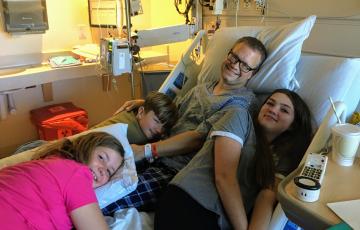
Lori
When my husband Ken was first diagnosed and treated for AML it felt like we were trapped in a fierce storm and being tossed about in a fury of wind. My husband Ken was diagnosed with AML (acute myeloid leukemia) and received intense treatment, spending a total of 120 days in the hospital in 2019, culminating in a bone marrow transplant (BMT). We are so grateful that his only sibling was a viable match as many patients struggle for years searching for a donor.
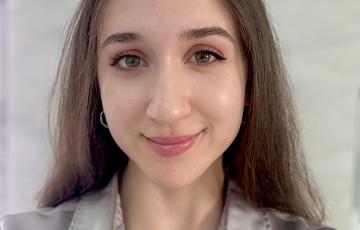
Ariana
In the blink of an eye, our lives can crumble underneath us like a tsunami drowning the life out of a city. Many of us unknowingly stand on the edge of an eroding cliff and one slip away from relinquishing our most desired aspirations. At 19 years old, I stood inches away from the edge of that cliff when I was diagnosed with essential thrombocythemia (ET). This was one of the most defining moments in my life that propelled me into a tenacious desire to become a physician capable of fully understanding the fragility of life.
Questions & Answers
What is the health insurance marketplace, and how do I know if I am eligible for coverage?The health insurance marketplace – sometimes referred to as the health insurance exchange – is where consumers can purchase health insurance plans that comply with the patient protections in the Affordable Care Act.
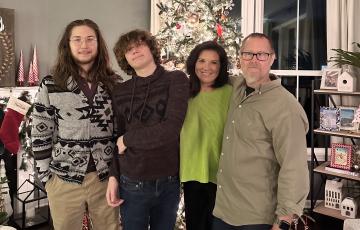
John William
I was diagnosed with acute myeloid leukemia (AML) in December 2019. After three days of chemo, which was discontinued due to bleeding in my lungs, I spent three weeks in the hospital finding out I had a life-threatening, invasive fungal sinusitis that they could not treat with medications or surgery. The doctors sent me home to hospice. They had shot me up with white blood count (WBC) stimulators to give me as much time as they could. I wanted to get through Christmas and my youngest's birthday which was on the 29th. They gave me three days to four weeks at most.
Therapy Acceleration Program - Portfolio
Since 2017, three TAP-supported therapies have been approved by the U.S.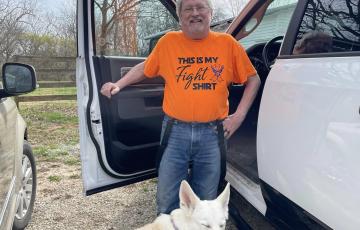
Patrick
It was November 2023. The doctor looked at me and said, “Mr. Reese, I’m terribly sorry to have to tell you this, but the leukemia has relapsed again. Combined with the graft-versus-host disease (GVHD) that is currently raging, we no longer have options for treatment. Our suggestion is that you start comfort care through hospice.”
